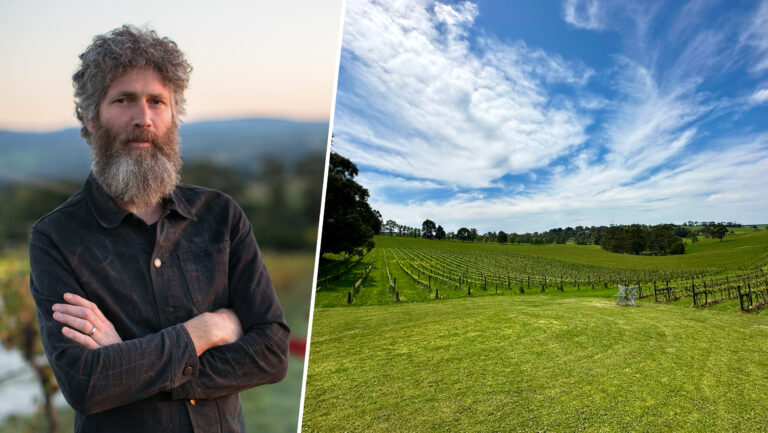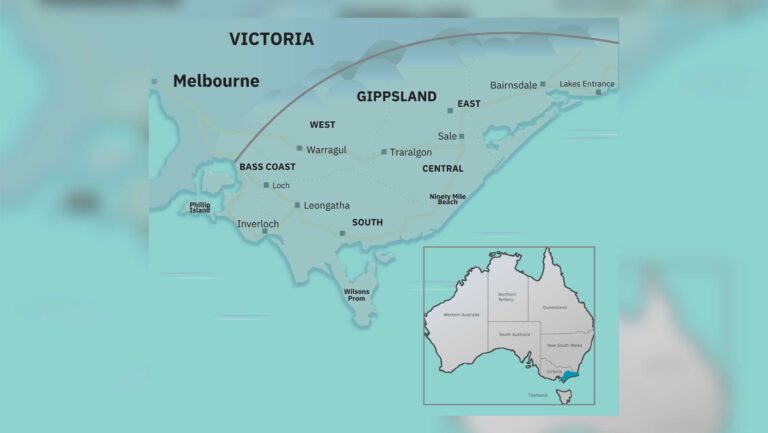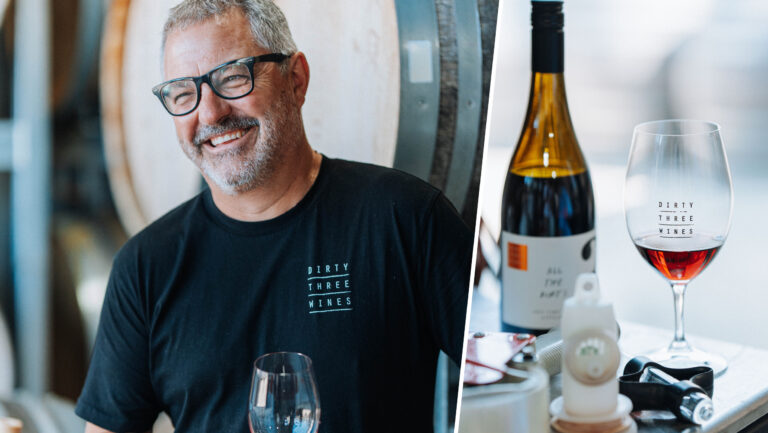Many American wine professionals would argue that just about all of the wines from Australia are undervalued. Even getting U.S. consumers to buy well-known and once highly popular Shiraz can be an uphill battle. But many would also argue that the battle is well worth it.
That’s certainly true of the wines from Gippsland, a large yet little-known wine region in southeast Victoria that’s home to mainland Australia’s coolest terroirs. “The proof is in the pudding with the quality of wine they’re putting out from Gippsland,” says Jane Lopes, the cofounder of Australian wine import company Legend Imports, pointing to the wines from two of the region’s pioneers, William Downie and Patrick Sullivan. “I would put their Chardonnays and Pinot Noirs up against top Burgundy and top U.S. wines, and feel confident they’d come out favorably, especially for the value they represent.”
Despite its relative obscurity, Gippsland is producing some of the country’s most exciting wines from two of the world’s most popular grape varieties. While you can find high-quality Chardonnay and Pinot Noir from many regions around the world, Gippsland is offering a truly unique take on these consumer-friendly varieties—and, in the process, “changing the overall perception of what Australian wine is,” says Simi Grewal, the cofounder of Decant Bottle Shop & Bar in San Francisco and Napa Valley.

Don’t miss the latest drinks industry news and insights. Sign up for our award-winning newsletters and get insider intel, resources, and trends delivered to your inbox every week.
A Brief History of Gippsland
“There was really nothing vineyard-wise in Gippsland until the late 1970s,” says Downie, who is the founder and winemaker for his eponymous winery. Unlike other Australian regions that had vineyards established during colonization, Gippsland never saw that kind of activity early on. Then, between 1978 and 1981, several wineries were established. “And a number of those [wineries] made real headway,” adds Downie, pointing to one of the region’s best-known producers, Bass Phillip, which was established in 1979.
But the region declined in the 1980s and ’90s, until, in 1998, “there was a big wave of vineyard establishment all across southern Australia, and that included parts of Gippsland,” says Downie. “Quite a few of the vineyards that still exist today were planted around that time. But from about 2010, things declined again—until the recent few years.”
Part of the issue was that investments were going elsewhere. “What happened, probably in the last 10 years, is that Tasmania has gone nuts with plantings,” says Marcus Satchell, the founder of Dirty Three Wines. “The expansion of cool-climate viticulture mostly happened in Tassie.”
The reason for this was twofold. “We didn’t have a big player that made a name and made a brand around Gippsland,” says Satchell. Plus, Downie adds, “A lot of people went to Tasmania because it’s a pretty easy place to grow grapes. [Unlike Gippsland], it doesn’t rain very much. It’s quite dry, but it’s cool.”
Despite being continuously overlooked, Gippsland is now inching towards its moment in the spotlight thanks to several dedicated winemakers that are proving the quality potential of the region. “It feels like we’re finally at the point where we’re turning into a proper wine region,” says Downie. “There’s been more vineyard establishment in the last five years than at any point in the region’s history, which is still not a huge amount of vineyard, but definitely getting us to the point where there is a critical mass of activity and some of the wines make it out of the region and around the world.”
 From left to right: William Downie, who runs his eponymous winery in Gippsland; a Gippsland vineyard shared by William Downie, Patrick Sullivan, and Ryan Ponsford of Entropy Wines. Photos courtesy of Wine Gippsland.
From left to right: William Downie, who runs his eponymous winery in Gippsland; a Gippsland vineyard shared by William Downie, Patrick Sullivan, and Ryan Ponsford of Entropy Wines. Photos courtesy of Wine Gippsland.
Understanding the Landscape of Gippsland
Gippsland stands out among Australian wine regions for several reasons. Of Victoria’s 21 regions, Gippsland is the largest. At over 41,000 square kilometers, it’s larger than Switzerland, notes Bernadine Phelan, the executive officer of Wine Gippsland. However, only 250 hectares are currently under vine across 75 vineyards and just under 50 wineries. So despite its size, the wine community is quite small.
Its location is also unique. “Gippsland is one of the few wine regions in proximity to a major city—[Melbourne]—that still has some (relatively!) affordable land,” says Lopes. The region stretches from Phillip Island in the west to the New South Wales border in the east, and it’s nestled between state and national park forests to the north, and the Bass Strait to the south.
These surroundings have a big impact on the climate. “Without having any altitude, we’re the coolest region in mainland Australia,” says Satchell. “So we probably share more similarities to Tasmania than we do with any other mainland region.” But Satchell notes that given the region’s size, “there’s obviously a lot of different microclimates, and I would even go as far to say that it’s not even micro, it’s more macro.”
However, there are a few characteristics that hold true for the majority of Gippsland. Most of the region is dairy country, with fertile paddocks and green rolling hills dotted with cows, and the occasional vineyard. Other than being generally cool, the region is also known—and distinct—for its high rainfall, which is around 420 to 530 millimeters during the growing season. “It is a wet, humid region, which can present a lot of challenges from a growing perspective,” says Satchell. “Our main issue is definitely disease pressure.”
These conditions can also take a toll on yields. “Poor flowering is such a huge problem for us,” says Downie. “We’ve averaged 0.3 tons per acre for the last seven years. So it takes a certain kind of insanity to decide that this is really where you want to be. But there are enough of us lunatics here to start to really turn it into something.”
Many do see the cool, wet climate has a benefit, despite the challenges it presents. “Though cool climates are not uncommon in Australia, the wet part is rare,” says Lopes. “This not only supports dry farming with greater water security, but the increased humidity levels soften the otherwise strong sunlight helping grapes to ripen more gently. This in particular creates very desirable conditions for Pinot Noir and Chardonnay.”
Plus, in the era of climate change, cool and wet are becoming harder and harder to come by, especially in Australia. “We’re probably the best setup in terms of our resilience to climate change,” says Satchell. “The big issue for Australian viticulture going forward is going to be rainfall. Here, we don’t generally have that problem.”
High rainfall is exactly what brought Neil Hawkins and his wife Anna to the region, where they founded The Wine Farm. “This is a green area when everything else is brown,” he says. “So with that, you get people trying to derisk their future to come in here.”
 A map of Gippsland. Photo courtesy of Wine Gippsland.
A map of Gippsland. Photo courtesy of Wine Gippsland.
What Makes Gippsland’s Wines Unique?
While cool-climate Chardonnay and Pinot Noir might not sound revolutionary, the wines from Gippsland manage to feel genuinely unique, particularly within the context of Australian wine.
“When you taste the wines, it’s unlike anything else that you’re getting from Australia right now,” says Grewal. “That was fascinating, and it definitely got me more intrigued.” In fact, Grewal was so enamored with the wines—specifically Patrick Sullivan’s Chardonnay—that despite already “having a lot of Southern Hemisphere Chardonnay” she decided to take a gamble on an unknown producer from an unknown Australian region. To her surprise and delight, “That ended up being the favorite wine of the night,” says Grewal, referring to an in-store event in which she poured the wine. “It’s so easy to open these up for someone and they’re like, ‘Oh, this is Australia?’”
For the region’s Pinot Noirs, “That little bit of extra time on the vine that we get, and the humidity in the area and the pressure around that generally forms wines with a little bit more depth and generosity than a lot of other Pinot regions in mainland Australia,” says Satchell. “You get a deeper color, slightly more depth of flavor, and then there’s usually an extra layer of complexity or dimension that runs through it, and it’s often an earthy kind of flavor … that develops into duck fat or beautiful truffle with a bit of age.”
For Lopes, the unusual climate really “makes an impact on the styles of wine,” she says. “I do believe that there’s great potential here, especially for Pinot Noir and Chardonnay that are incredibly delicate, savory, and filigreed. There’s also certainly a cultural, community difference that’s impacting Gippsland right now, which is resulting in a high quality of farming, minimal intervention wines, and unique wine styles.”
Alistair Hicks, the president of Wine Gippsland and the founder of Blue Gables Vineyard, has seen the region’s unique winemaking community blossom firsthand. “It’s very collegiate,” says Hicks. “We’re willing to support each other because we need to [come together] to grow as a region.” This is partly thanks to the lack of big investment; nearly all of the wineries are independent, first-generation, and family-owned.
These unique, high-quality, yet still affordable wines offer a great opportunity for U.S. wine buyers, as Grewal has seen firsthand. Lopes offers another example: “A friend who recently visited a restaurant in Los Angeles told the sommelier that they loved great Puligny-Montrachet, but didn’t want to spend that kind of money. The sommelier recommended one of Patrick Sullivan’s single-vineyard Chardonnays—about $150 on the list—and they absolutely loved it.”
So, while Gippsland’s premium, small-production wines won’t offer great value for by-the-glass selections, says Lopes, “they are going to compete with the great wines of the world at a lower price point.”
 From left to right: Marcus Satchell, the founder of Dirty Three Wines; a bottle of Dirty Three Wines Pinot Noir. Photos courtesy of Wine Gippsland.
From left to right: Marcus Satchell, the founder of Dirty Three Wines; a bottle of Dirty Three Wines Pinot Noir. Photos courtesy of Wine Gippsland.
What’s Next for Gippsland?
While Gippsland’s wine scene remains very small, it is growing—in vineyard area, in interest, and in exports. According to Wine Australia, exports to the U.S. were up 64 percent in volume and 58 percent in value in the year ending May 2024.
Its vast size, especially compared to most of the state’s smaller, more crowded regions, offers an opportunity for regional producers to expand. “I’ve been fielding quite a few questions from people around Mornington and the Yarra,” says Satchell. “Those two regions are just about landlocked now, so there’s really not much growth they can do in terms of planting. So, there’s a lot of people that are sort of looking over the ridge [to Gippsland].”
Gippsland also offers a rare opportunity for young winemakers. “Compared to the Yarra Valley or down in Mornington, you’re probably talking about land costs of about a third of what you might pay in those other areas, and that’s given young winemakers an opportunity to invest,” says Hicks.
Nevertheless, growth is still expected to be slow. “Despite the fact that there’s a lot more vineyard development happening now than there ever has been, that’s off a minuscule base,” says Downie. “A lot of the other producers in Gippsland haven’t really looked to ship wines outside the region, let alone outside of the country. So, I think it will take a little while. Patrick Sullivan and I in particular fully intend to do everything that we can to raise [Gippsland’s] profile around the world, and we’re already working on that.”
Lopes is working on it, too. “It’s been a slow road to increase regional awareness for Australia in the U.S.,” she says. “We certainly have increased demand and awareness for our two Gippsland producers, but we still don’t hear ‘where can I find more Gippsland wine?’ or anything like that. But that is exactly the kind of work we’re trying to do.”
Dispatch
Sign up for our award-winning newsletter
Don’t miss the latest drinks industry news and insights—delivered to your inbox every week.
Caitlin A. Miller is a New York-based wine writer and a senior editor for SevenFifty Daily. Her work has appeared in Food & Wine, Vinous, and Christie’s International Real Estate Magazine. She holds the WSET Diploma in Wines, the WSET Level 2 Award in Spirits, and was the recipient of the 2020 Vinous Young Wine Writer Fellowship.


